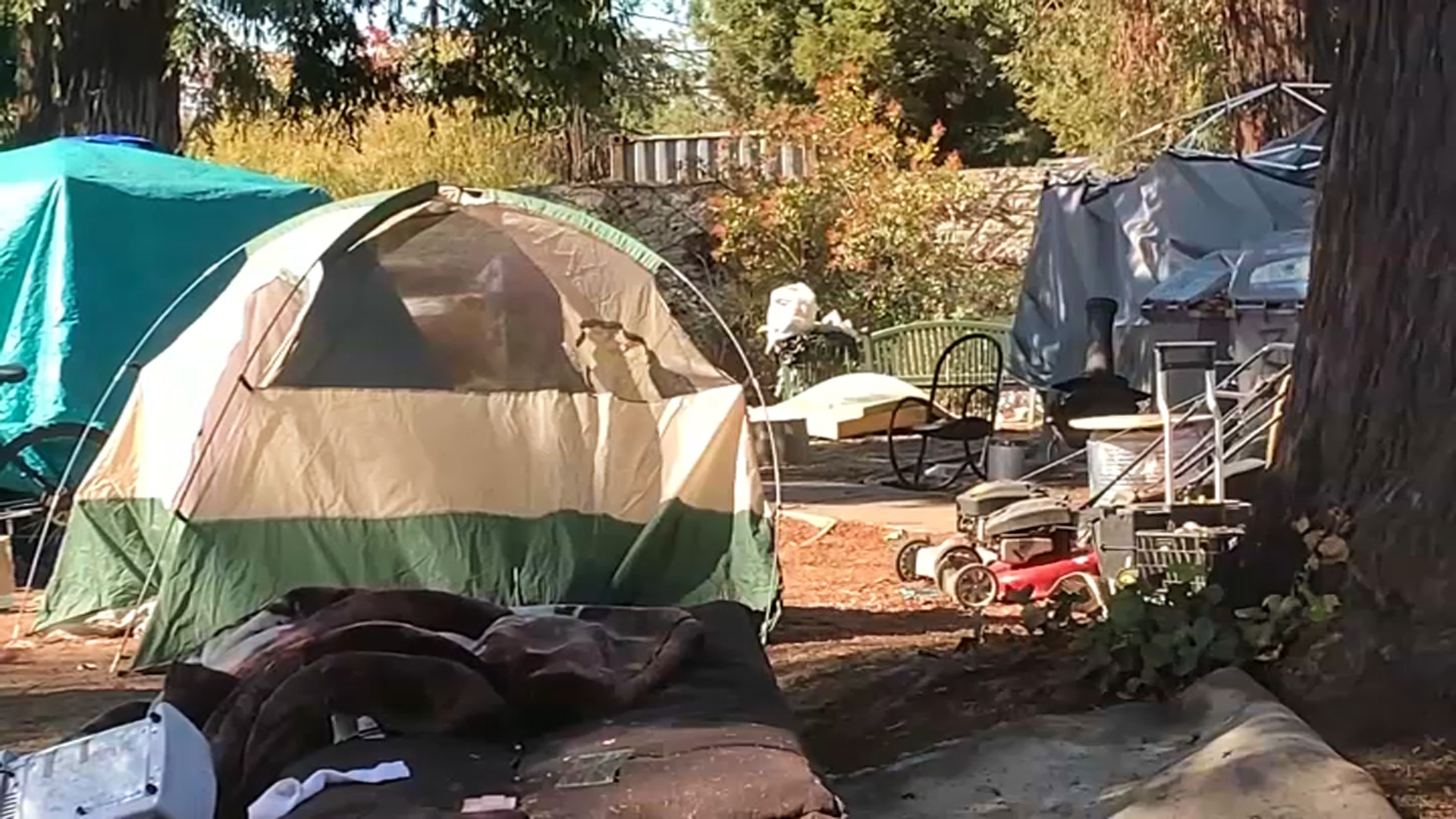The San Diego City Council Tuesday heard the first proposals for temporary homeless shelters around the city to make up for hundreds of shelter beds scheduled to come offline in December and early next year.
Future developments at Golden Hall, Father Joe's Paul Mirabile Center and Rachel's Promise Shelter, along with the scheduled closure of several temporary shelters, means that the city's current shelter bed count of 2,508 could drop precipitously in coming months. Those three named shelters represent more than 650 beds.
The informational item Tuesday looked at city- and privately-owned sites in seven of San Diego's nine council districts, including libraries and community centers.
Related stories
Get top local stories in San Diego delivered to you every morning. Sign up for NBC San Diego's News Headlines newsletter.
The site that brought the biggest backlash from the public came from a misunderstanding. The Balboa Park Activity Center had been proposed by City Council President Sean Elo-Rivera as an emergency shelter because he believed Golden Hall and the Mirabile Center were scheduled to close in early October.
The Balboa Park Activity Center had been used as a shelter for families impacted by January's record-setting flooding in Southeastern San Diego for four months. Multiple members of the public made a case the facility was widely used for athletics and as a community center and urged the city council to find somewhere else.
However, Golden Hall and the Mirabile Center will not close until the end of December, owing to discussions between city staff and the fire marshal. Elo-Rivera acknowledged the confusion and said the emergency shelter was "not necessary."
Councilman Stephen Whitburn was clear in his opposition to that site.
"The Balboa Park Activity Center is not a part of this short-term action plan," he said.
While the city has added 930 sites to a range of shelter options -- including traditional congregate shelter, repurposed motels and safe sleeping sites for those in vehicles -- the number of homeless in the city has continued to outpace space available. The number of homeless in the region increased by around 20% between 2022 and 2023, but a less dramatic increase in the city of around 4% was recorded in this year's count.
Sarah Jarman, director of the city's Homelessness Strategies and Solutions Department, said the quickest way to increase the number of shelter spaces would be an expansion of the ongoing Safe Sleeping sites, such as the O Lot in Balboa Park, which already has space for 408 tents.
Earlier this month, the council returned an agenda item to staff which could have given the mayor new authority to act amid a homelessness and housing emergency to give city employees more time to understand the ramifications of such a move.
The item, which was pulled by Elo-Rivera before the meeting, would give the green light to Mayor Todd Gloria to expedite housing permitting and homelessness spending.
If passed by the council when it returns, the action as written would grant the mayor the power to -- during a declared local housing and/or homelessness emergency -- "make orders and directives to address the emergency, procure contracts to uphold standards of living for homeless San Diegans, suspend certain regulations to procure contracts, including City Council approval for contracts under $5 million, and accept and spend any grant monies to respond to the emergency," a city staff report reads.
On Sept. 6, the city put out a call asking for property owners to offer up locations as future shelter sites.
The request for information came as Mayor Todd Gloria's efforts to establish a proposed "mega shelter" remain under negotiation.
Gloria's ambitious 30-year lease proposal for a 65,000-square-foot commercial building and its potential transformation into a massive homeless shelter and resource campus were delayed in July, with discussion meant to pick up again in the fall.
The shelter, Hope @ Vine, was proposed at a cost of $1.95 per square foot, with annual 3.5% rent increases and an estimated $12.5 million in facility maintenance costs over the term. The council balked at that price point and said it needed more details.
Site improvements call for a commercial kitchen, laundry facilities, dining areas, indoor and outdoor recreation areas, showers and restrooms. Proposed onsite services include job training, meals, housing navigation and behavioral health services with annual operating costs anticipated to be $26.4 million.
That request for information for possible shelter sites is still open through Oct. 7 at 4:30 p.m. and can be accessed at sandiego.seamlessdocs.com/f/shelterrfi.
More concrete proposals for temporary shelter will be brought back to the City Council this fall.




